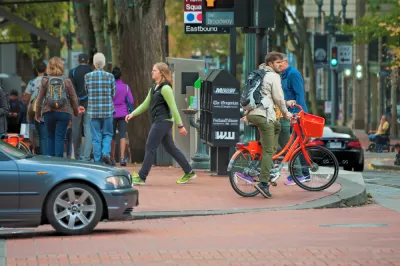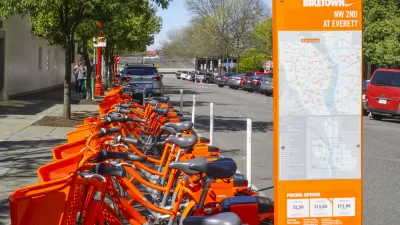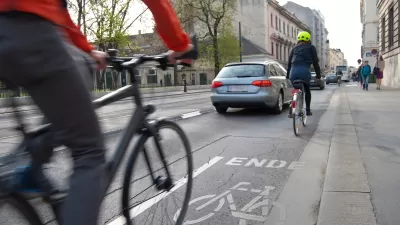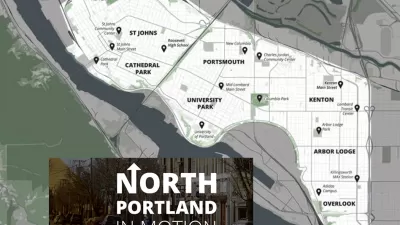Portland has approved a plan that clears the way for $36 million in bike and other transportation safety projects in the city's downtown.

"Within the next five years, Portland has pledged to create bus-only travel lanes on the approaches to three downtown bridges, build a network of protected bike lanes on both sides of the Willamette River and improve dozens of dangerous pedestrian crossings in the city’s center," reports Andrew Theen. The vote comes as a major benchmark for the Central City in Motion Plan, which has been underway since 2012.
"The vote amounts to one of the most significant council actions on bike and transit projects in years, and transportation officials say it’s critical to give Portlanders a safe and efficient option to get around other than driving --- especially as the region grapples with how to meet its ambitious carbon emission reduction goals," adds Theen.
The article lists the priority projects included in the Central City in Motion Plan, including $5.3 million for protected bike lanes and bus priority lanes on the Burnside Bridge, $6.6 million for additional protected bike lanes in downtown, and $4.5 million plan to convert Seventh Avenue in the Central Eastside Industrial District into a protected bike route.
The article also includes details of the political debate that preceded the vote. For more background on the Central City in Motion Plan see previous Planetizen coverage.
FULL STORY: Portland backs $36 million in projects to speed up buses, make protected bike lanes

Manufactured Crisis: Losing the Nation’s Largest Source of Unsubsidized Affordable Housing
Manufactured housing communities have long been an affordable housing option for millions of people living in the U.S., but that affordability is disappearing rapidly. How did we get here?

Americans May Be Stuck — But Why?
Americans are moving a lot less than they once did, and that is a problem. While Yoni Applebaum, in his highly-publicized article Stuck, gets the reasons badly wrong, it's still important to ask: why are we moving so much less than before?

Using Old Oil and Gas Wells for Green Energy Storage
Penn State researchers have found that repurposing abandoned oil and gas wells for geothermal-assisted compressed-air energy storage can boost efficiency, reduce environmental risks, and support clean energy and job transitions.

Greening Oakland’s School Grounds
With help from community partners like the Trust for Public Land, Oakland Unified School District is turning barren, asphalt-covered schoolyards into vibrant, green spaces that support outdoor learning, play, and student well-being.

California Governor Suspends CEQA Reviews for Utilities in Fire Areas
Utility restoration efforts in areas affected by the January wildfires in Los Angeles will be exempt from environmental regulations to speed up the rebuilding of essential infrastructure.

Native American Communities Prepare to Lead on Environmental Stewardship
In the face of federal threats to public lands and conservation efforts, indigenous groups continue to model nature-centered conservation efforts.
Urban Design for Planners 1: Software Tools
This six-course series explores essential urban design concepts using open source software and equips planners with the tools they need to participate fully in the urban design process.
Planning for Universal Design
Learn the tools for implementing Universal Design in planning regulations.
Heyer Gruel & Associates PA
City of Moreno Valley
Institute for Housing and Urban Development Studies (IHS)
City of Grandview
Harvard GSD Executive Education
Salt Lake City
NYU Wagner Graduate School of Public Service
City of Cambridge, Maryland





























